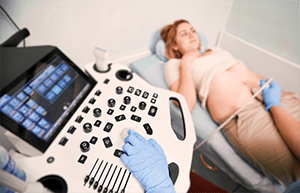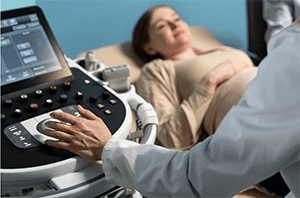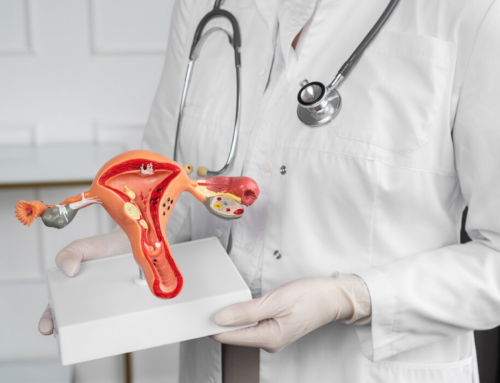Endometriosis is a challenging condition to live with, affecting millions of women worldwide. It involves the growth of tissue similar to the uterine lining outside the uterus, causing pain, inflammation, and, in some cases, fertility issues. Diagnosis is a critical step in managing endometriosis, and ultrasound imaging is one of the tools available to healthcare providers. This blog post explores how endometriosis appears on ultrasound, aiding in the understanding and detection of this complex condition.

The Role of Ultrasound in Diagnosing Endometriosis
Ultrasound, particularly transvaginal ultrasound, is a non-invasive imaging technique that allows healthcare providers to view the reproductive organs. While endometriosis can be challenging to diagnose solely through ultrasound, this method can identify specific manifestations of the condition, such as endometriomas (chocolate cysts) and deep infiltrating endometriosis.
Identifying Endometriomas on Ultrasound
Endometriomas are cysts filled with old blood, appearing in the ovaries as part of endometriosis. On ultrasound images, endometriomas typically present as homogenous, hypoechoic (dark) cystic masses. These cysts can vary in size and are often described as having a “chocolate syrup” appearance due to the thick, dark fluid they contain. The presence of endometriomas on ultrasound can strongly indicate endometriosis.
Deep Infiltrating Endometriosis (DIE) and Ultrasound
Deep infiltrating endometriosis (DIE) is a severe form of endometriosis where the tissue penetrates more than 5mm beneath the peritoneal surface. On ultrasound, DIE can appear as irregular nodules or masses that may involve the uterosacral ligaments, bowel, bladder, and other pelvic structures. These lesions can cause significant pain and discomfort, and their detection on ultrasound is crucial for appropriate management and treatment planning.


Limitations of Ultrasound in Diagnosing Endometriosis
It’s important to note that while ultrasound can detect endometriomas and DIE, it may not identify all forms of endometriosis, especially superficial peritoneal lesions. The sensitivity and specificity of ultrasound in diagnosing endometriosis depend on the operator’s experience and the patient’s anatomy. In some cases, laparoscopy, a minimally invasive surgical procedure, may be required for a definitive diagnosis.
The Importance of Experienced Sonographers
The expertise of the sonographer plays a vital role in the accurate detection of endometriosis on ultrasound. Experienced sonographers, trained in identifying the subtle signs of endometriosis, can provide valuable insights and aid in the diagnosis process. It’s beneficial for patients to seek care from specialists familiar with the ultrasound characteristics of endometriosis.
Let our Endometriosis Counselors guide you to the expert care you need through a one on one session free of charge.
Summary
While ultrasound is a valuable tool in the diagnostic arsenal against endometriosis, it has its limitations and is often used in conjunction with other diagnostic methods. Understanding what endometriosis looks like on ultrasound can help patients and healthcare providers in the early detection and management of this condition. By combining expertise, technology, and patient history, the path to managing endometriosis becomes clearer, offering hope for those affected by this challenging condition.








Leave A Comment